Even though I have a spanky new job with a desk and everything, quite a bit of what I do is field work. And like any job, you have to keep your skills sharp and go out for training.
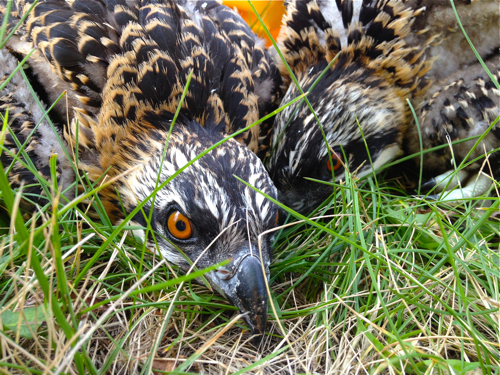
This week it took the form of helping Mark Martell of Audubon Minnesota with banding osprey chicks. And because we have the same heatwave in Minnesota that's gripping the rest of the nation, we had to start early and scramble like crazy to get four nests of birds banded before the heat of the day would make it too stressful to handle young birds.
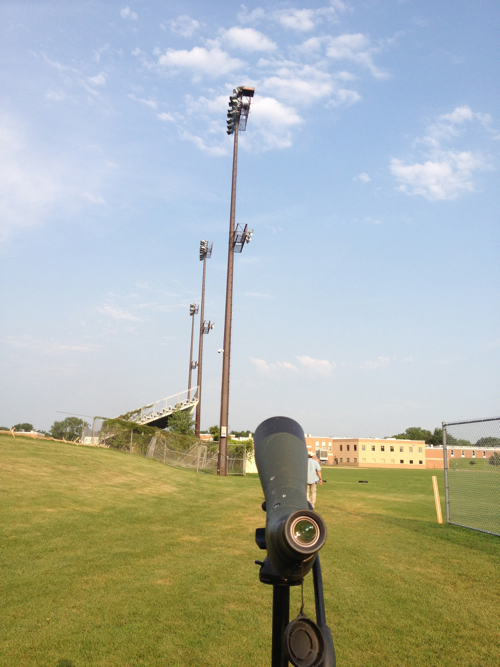
Most of the nests were on typical poles but our first nest was on top of the lights in a high school ball field. We use a professional tree climber to climb up to the nest. He uses his yellow bag to load up the chicks and gently lowers them down to the ground. He will remain at the nest while we band the birds and then we will hoist them up the rope.
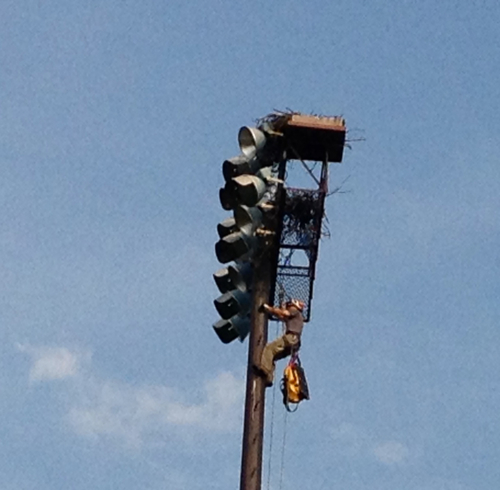
I'm sure the tree climber gets a great view, but I'm so glad that's not my job.
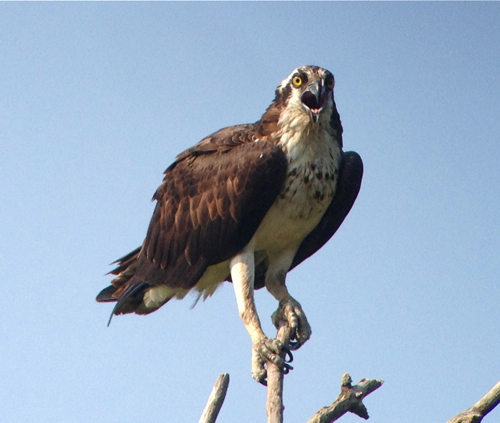
Some of the chicks were so large that we had to send them down one at a time in the bag. While we do this, the adults fly around and make a fuss. The don't really attack us, they mostly flap can yell. Occassionally one will dive towards the climber, but doesn't get very close unlike peregrine falcons or Cooper's hawk which actually will make contact. The above adult perched long enough for me to get a photo of her by holding my iPhone up to my spotting scope. She really does look like she's spewing some serious profanity at us.
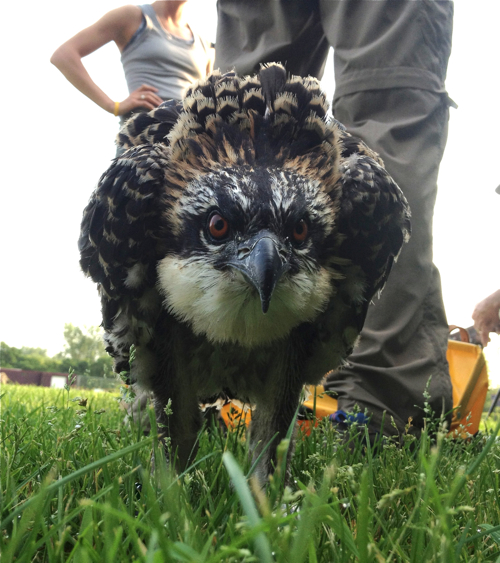
When we take the chicks out of the bag they are up right. As the adults circle overhead and make warning calls, an instinct for the chicks to flatten kicks in.

And they sort of deflate right before our eyes. It's an interesting defense, if you are looking at the nest from the ground, you can't see any chicks. And with that coloration on their backs, they would blend in well with the colors of the nest and help hide them from aerial predators.
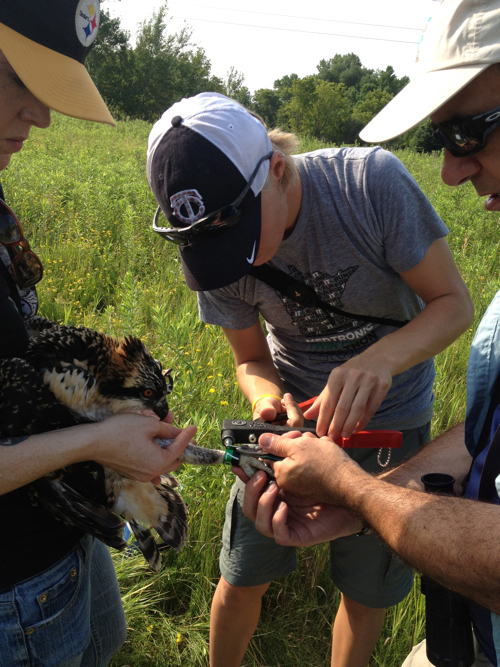
Above is Avian images holding a chick, my coworker Brie applying a rivet band and Mark Martell walking us through the process. Each bird gets a silver federal band and color band that will be easier to read for tracking purposes. Most of the chicks were in the five to six week old age range, meaning their feet are big enough for a band, but not old enough to attempt to fly. But some of the chicks were getting closer to fledging age which is between seven to eight weeks. After we banded older birds, we sprayed their feathers lightly with water which makes them less likely to flap around after they are put back in the nest and less likely to take a tumble over the side as the climber puts them back.
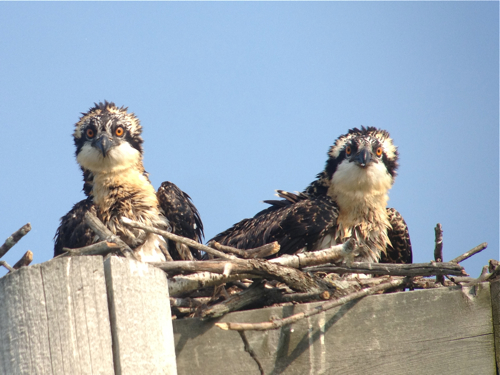
Here are two chicks after being banded. Don' you just love osprey faces? They look like, "WTF just happened?" Just think, in a couple of weeks, these two kids will be learning to grab live fish with their toes and then migrate south into Central and South America. They will spend the next 18 months down there figuring out how to be an osprey and then return in 2014 to breed. That sounds so appealing sometimes, going south of the border to find discover myself for 18 months. Sigh.
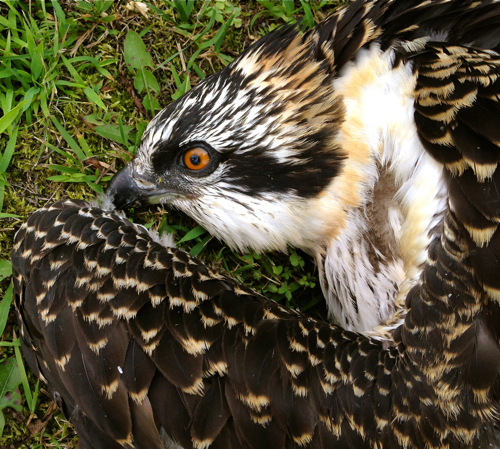
I checked out osprey longevity records on the Bird Banding Lab site. The oldest osprey I could find according to bands on wild birds lived over 25 years. There were a few birdrs over 20, though I think 16 - 18 years is closer to the normal age range for a wild osprey.
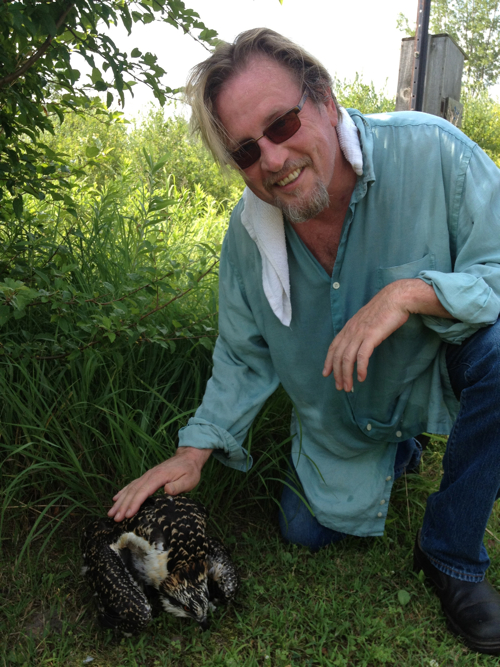
I love all the different people we encounter when we band these birds, above is musician and author Paul Metsa. You don't have to be hardcore into birds to appreaciate the amazing osprey. One of the really cool things about osprey is that they are truly a worldwide bird. They are found on every continent except Antarctica. They are a charismatic bird that appeal to people. While we were banding at the first nest we noticed someone on the other side of the ball field in a minivan watching us. One of us went over and told her to join us so she could see the banding up close. Turns out she lived in the neighborhood and has been watching the nest. She heard about the banding and wanted to watch but didn't want to interfere. But I love how osprey inspire people to take note of nature. I love how they have adapted to using poles people put up for them but also taking on light poles and water towers. They are a truly resilient and tolerant bird.
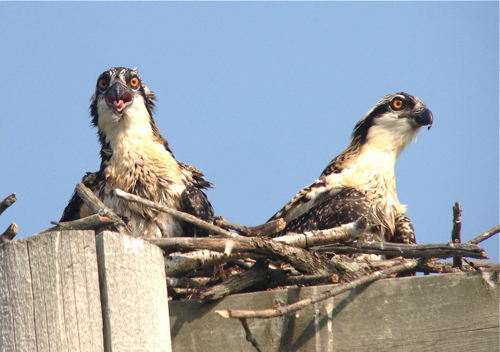
Another sweaty day in the office but a fun day nonetheless.
